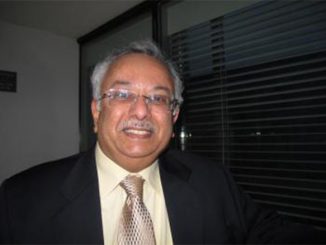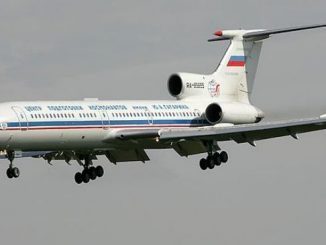
Containers of a chemical suspected to be chlorine were dropped by helicopters on rebel-held east Aleppo on Tuesday for the fourth time in a week in what became a habit for Assad regime, while the question is being raised: What can the UN and global powers do to stop Assad regime?
Around 275,000 people trapped by the siege of eastern Aleppo have been suffering from intense air strikes that battered the eastern part of the city since Tuesday, when Assad regime and its allies resumed operations after a pause lasting weeks. They launched ground attacks against insurgent positions on Friday.
The Syrian Observatory for Human Rights said on Tuesday that 141 civilians, including 18 children, had been killed in the last week of violence while hundreds of others were injured.
Helicopters continue extensively dropping barrel bombs in conjunction with airstrikes by warplanes on areas in the eastern neighborhoods of city, accompanied by artillery shelling by the regime forces on the same places and more than 27 civilians in Tuesday.
The observatory said that residents of eastern districts had suffered from “suffocation” after four barrel bomb attacks and that medical officials suspected a chlorine gas attack.
A barrel bomb loaded with chlorine killed a family of six in rebel-held eastern Aleppo early on Sunday.
Two medics said the al-Baytounji family suffocated to death because the barrel bomb, which fell in the Sakhour district at about midnight, had been laced with chlorine gas.
Video of the Syrian family killed was distributed online by the medics. It showed the bodies of four children stretched out on a floor, their lips blue and dark marks around their open eyes.
Medics and residents in rebel-held areas often accuse the Syrian military of using chlorine in barrel bomb attacks.
4children & their parents were killed & 25 injured in AlSakhour – #Aleppo after being targeted with poisonous gas today -suspected chlorine pic.twitter.com/2Y4xngHDSX
— The White Helmets (@SyriaCivilDef) November 20, 2016
#Chlorine gas barrel bombs, seems it has become usual weapon regime is using day to day,in the besieged #Aleppo. pic.twitter.com/XXLLPFM6GU
— Zouhir_AlShimale (@ZouhirAlShimale) November 22, 2016
On 31 October, Syrian state media said militants had fired shells containing chlorine gas at a residential area of the regime-held western part of the city, al-Hamdaniya. Rebels denied that, and said government forces had fired poison gas on another frontline.
On September 7, the Syrian Civil Defence, a rescue workers’ organization that operates in rebel-held areas, said Assad regime’s helicopters had dropped barrel bombs containing chlorine on the Sukari neighborhood, killing at least one person and injuring more than 100.
The Syrian Civil Defence and the Syrian American Medical Society posted videos and photos on social media showing children doused in water using oxygen masks to breathe.
The British-based Syrian Observatory for Human Rights said medical sources had reported 70 cases of suffocation.
“Activists on the ground are saying that victims that were rushed to the hospitals are experiencing breathing difficulties,” a journalist said.
“They say that symptoms are the same that they have experienced in the past and this led them to believe that this is a chlorine gas attack.”
However, these latest attacks are not an exception, as Assad regime is using chemical weapons as a frequent weapon against Syrian civilians.
Another reported use of chlorine gas in besieged eastern #Aleppo City. Casualties include many children. pic.twitter.com/HTQ2jcL0kJ
— SAMS (@sams_usa) September 6, 2016
Long history of chemical attacks
The Assad regime has repeatedly violated UN Security Council resolution 2118, which required Syria to dismantle its chemical weapons arsenal, a rights group has said in a report.
While Syrian opposition forces and human rights groups accuse the Assad regime of perpetrating the atrocity, the Syrian regime denies the claim.
Human Rights Watch said that it has strong evidence proving regime involvement in the Ghouta chemical attack.
The Syrian Network for Human Rights (SNHR) said it has documented 139 chemical attacks in Syria since September 2013 when the UN Security Council issued resolution 2118 for dismantling Syria’s chemical weapons arsenal.
The 10 page report notes that poison gases were used 33 tomes before Security Council Resolution 2118, adopted on 27 September 2013, while poison gases were used in 139 attacks by both the Syrian regime and ISIS after Security Council Resolution 2118 was adopted.
The report asserts that the Syrian regime focused in its use of poison gases on opposition-held areas where 97% of its chemical attacks targeted opposition-held areas while 3% of the attacks were carried out in ISIS-held areas.
The report sheds light on four new attacks that involved the use of chemical weapons between 1 January 2016 and 20 August 2016.
A UN investigation also concluded that Assad regime in Syria used chemical weapons against its own people.
The year-long inquiry found that the Assad regime used chlorine gas in attacks in Idlib province in 2014 and 2015.
The investigation was carried out by the Joint Investigative Mechanism (JIM) of the UN and the Organisation for the Prohibition of Chemical Weapons (OPCW), an international chemical weapons watchdog.
What will the UN do?
As the Syrians waited for the global powers to make real moves for protecting them, all they got were statements.
The US ambassador to the UN, Samantha Power, have previously said the use of chemical weapons was “barbaric” and called for “all states to support strong and swift action”.
Ms Power accused the Assad regime of violating a September 2013 resolution which orders the UN Security Council (UNSC) to impose measures for “any use of chemical weapons by anyone in the Syrian Arab Republic”.
Ned Price, a spokesman for the US National Security Council, said it was now “impossible to deny” the Syrian regime used weapons in violation of international law.
“The United States will work with our international partners to seek accountability through appropriate diplomatic mechanisms,” he said, adding that Russia and Iran should participate with UN member states.
French ambassador to the UN Alexis Lamek also said: “the council will have to act”.
“When it comes to proliferation, use of chemical weapons, such weapons of mass destruction, we cannot afford to be weak,” he added.
However, their statements were not translated into actions on the ground.
President Barack Obama said the use of chemical weapons in Syria was a “red line” for him but then withered when Assad’s forces used sarin-filled shells to kill some 1,400 Syrians men, women, and children in 2013. America has armed and trained Syrian rebels, but only in small numbers. It never bombed Assad’s forces their behalf or established a no-fly zone where Syrian civilians might be safe from Syrian and Russian airstrikes.
The Syrian crisis began as a peaceful demonstration against the injustice in Syria. Assad regime used to fire power and violence against the civilians and led to armed resistance. 450.000 Syrians lost their lives in the past five years according to UN estimates, and more than 12 million have lost their homes.



